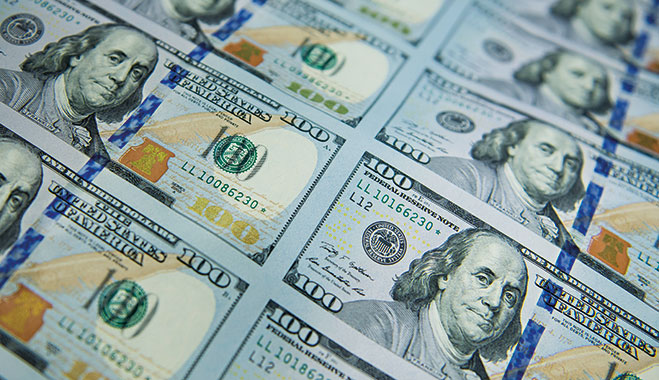
1875
Before 1875, a double standard for silver and gold was used for international payments, causing difficulties when their value rose and fell as a result of supply and demand. To eradicate this, the gold standard was informally created, guaranteeing the two-way conversion of currency into a set amount of gold. The world’s major economies pegged a specific amount of respective currencies to an ounce of gold – the difference in price became their exchange rates.
1900
Following the rejection of the proposed international bimetallic standard by the British, the US finally embraced the gold standard on an official basis. US President William McKinley signed the Gold Standard Act and established that gold was the only reserve accepted for redeeming coinage and paper currency, thereby bringing an end to bimetallism. After this, every dollar issued by the US was equivalent to the value of 23.22 grains of gold.
1933
The gold system started to break down during the Second World War when European powers printed more money than they had in gold reserves to fund military projects. The financial crisis of 1933, during which large volumes of gold flowed out of the US Federal Reserve, led to the US stating it could no longer fulfil convert currency into gold. The Gold Standard ended when US President Franklin Roosevelt made the private ownership of gold illegal, except in the case of jewellery.
1944
Over 700 delegates met at the UN Monetary and Financial Conference in New Hampshire to fill the vacuum left behind by the Gold Standard. A mechanism for fixed exchange rates was established with the appointment of the US dollar as the international reserve currency. It was decided that international agencies would be created in order to monitor economic activity across the globe. Representatives of 45 countries signed the agreement and the Bretton Woods System was born.
1945
The Second World War ended in September, allowing the Bretton Woods System full reign. Fixed at $35 per ounce, the US dollar quickly gained traction as an international reserve currency. While the world had begun the painstaking process of economic recovery, the International Bank for Reconstruction and Development was founded to offer financial assistance. Problems resurfaced as surpluses in US trade soon led to a shortage in dollars overseas.
1947
The IMF became operational, acting as a supranational body to promote global monetary cooperation and provide loans to developing nations. The General Agreement on Tariffs and Trade was also signed with the aim of stimulating international trade. Yet, trouble in the system began as military spending, foreign aid and international investment in the 1960s meant that the US no longer held the reserves necessary to cover the volume of dollars in circulation around the world.
1971
US President Richard Nixon announced his new economic programme, known as the ‘Nixon Shock’. The US refused to exchange US dollars for gold, marking the end of the Bretton Woods system. After months of negotiations, the Smithsonian Agreement was ratified and had established a new set of fixed exchange rates based on the devalued dollar. Despite being heralded for its significance in financial history, the Smithsonian Agreement began to break down a year later.
1976
Following the collapse of the Smithsonian exchange rate system, IMF members met in Jamaica to agree on a new international monetary framework. The Jamaica Agreement abolished gold as a reserve asset and formalised the floating exchange rate system that survives to this day. Countries around the world have since chosen their own method of fixed or floating, allowing either central banks or demand to determine exchange rates.


